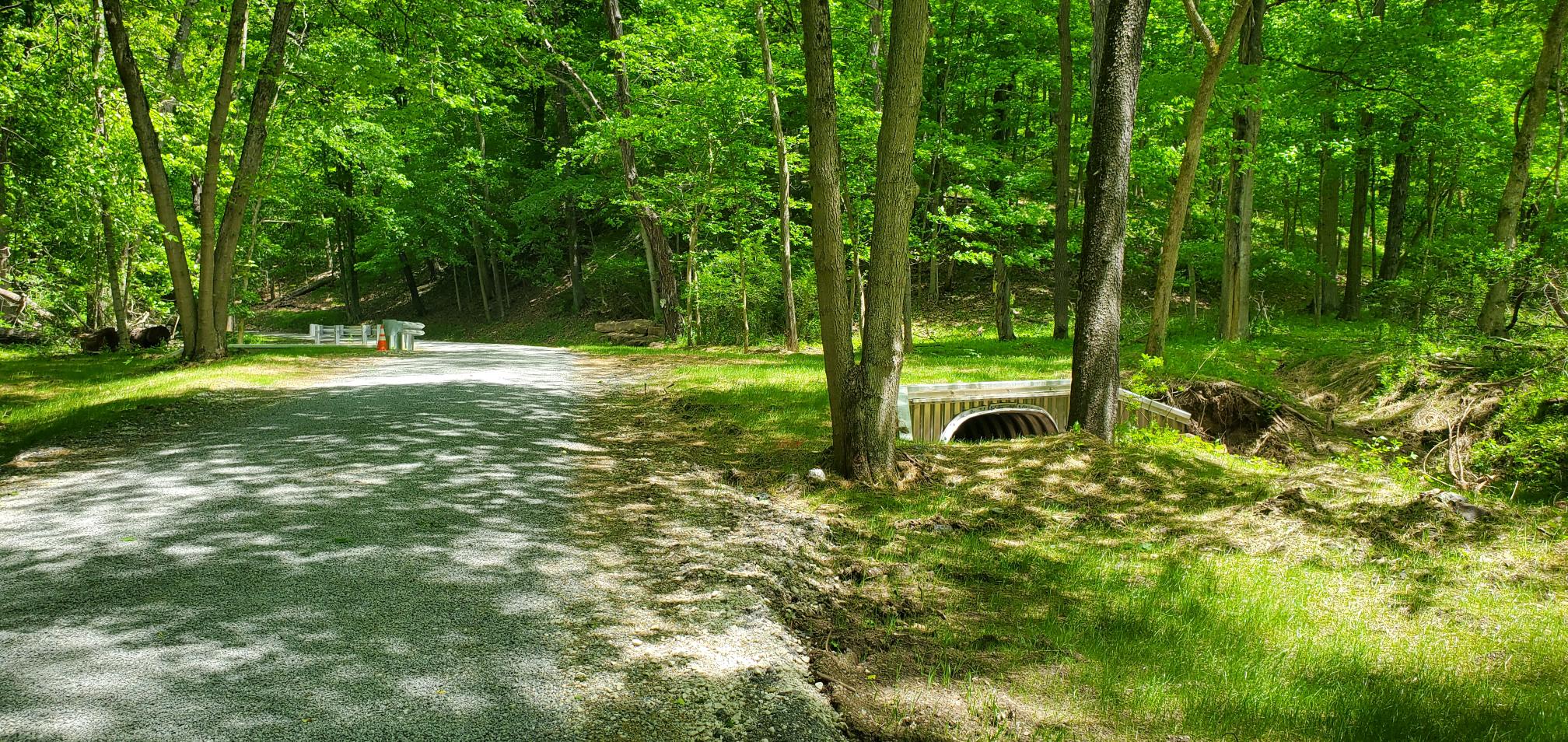Safe Roads and Healthy Streams: Hunt Road
Dirt, gravel and low volume roads (DGLVR) are an essential part of our transportation system and a major source of pollution. Water runs along roads, picks up pollution and delivers it to nearby streams or lakes.
The DGLVR grant program provides education, technical assistance and funding to improve roads and subsequently the landscapes they travel through. Every year, projects are funded that promote cost-effective, environmentally-sound maintenance practices to correct pollution and improve safety.
What Happens When a Stream Crossing Is Too Small?
As one of the few naturally spawning trout streams in Allegheny County, Little Sewickley Creek Watershed provides vital habitat to fish and other aquatic species.
Fish need to cross roads too. Stream crossings, sometimes called culverts or crosspipes, connect one side of the stream to another while allowing traffic to pass above. An undersized stream crossing in Sewickley Heights Borough prevented water from moving through the structure, harming the aquatic ecosystem while eroding streambanks and Hunt Road’s gravel surface.
Together, ACCD and Sewickley Heights Borough replaced the existing stream crossing on Hunt Road with a new structure to reduce maintenance needs and improve the stream environment.

Improvements to Hunt Road
Culvert Replacement: With funding from ACCD’s Dirt, Gravel & Low Volume Road Grant, this project included the replacement of a 42-inch-wide concrete round pipe with a 10.5-foot-wide bottomless aluminum box culvert.
According to measurements taken prior to construction, the culvert needs to be at least 9.5 feet wide to accommodate the stream’s “bankfull width” or the width of the stream during high flow events. A structure that meets the bankfull width of a stream ensures water will continue to flow through the culvert at a natural pace and prevent erosion at the pipe’s entrance and exit.
In-Stream Structures: The grant also funded the installation of in-stream structures to help stabilize the stream environment and prevent further erosion. The in-stream structures allow for stream continuity, an important factor in allowing aquatic life to travel through the culvert.
Streams have high points, called riffle crests, and low points, called pools. To accurately restore and improve the stream environment for aquatic life, crews re-installed riffle crests and pools during construction of the culvert. Using measurements taken before construction to chart desired locations for in-stream structures, crews used large rocks to create stable high points in the stream. These new riffle crests provide additional stability for the stream.